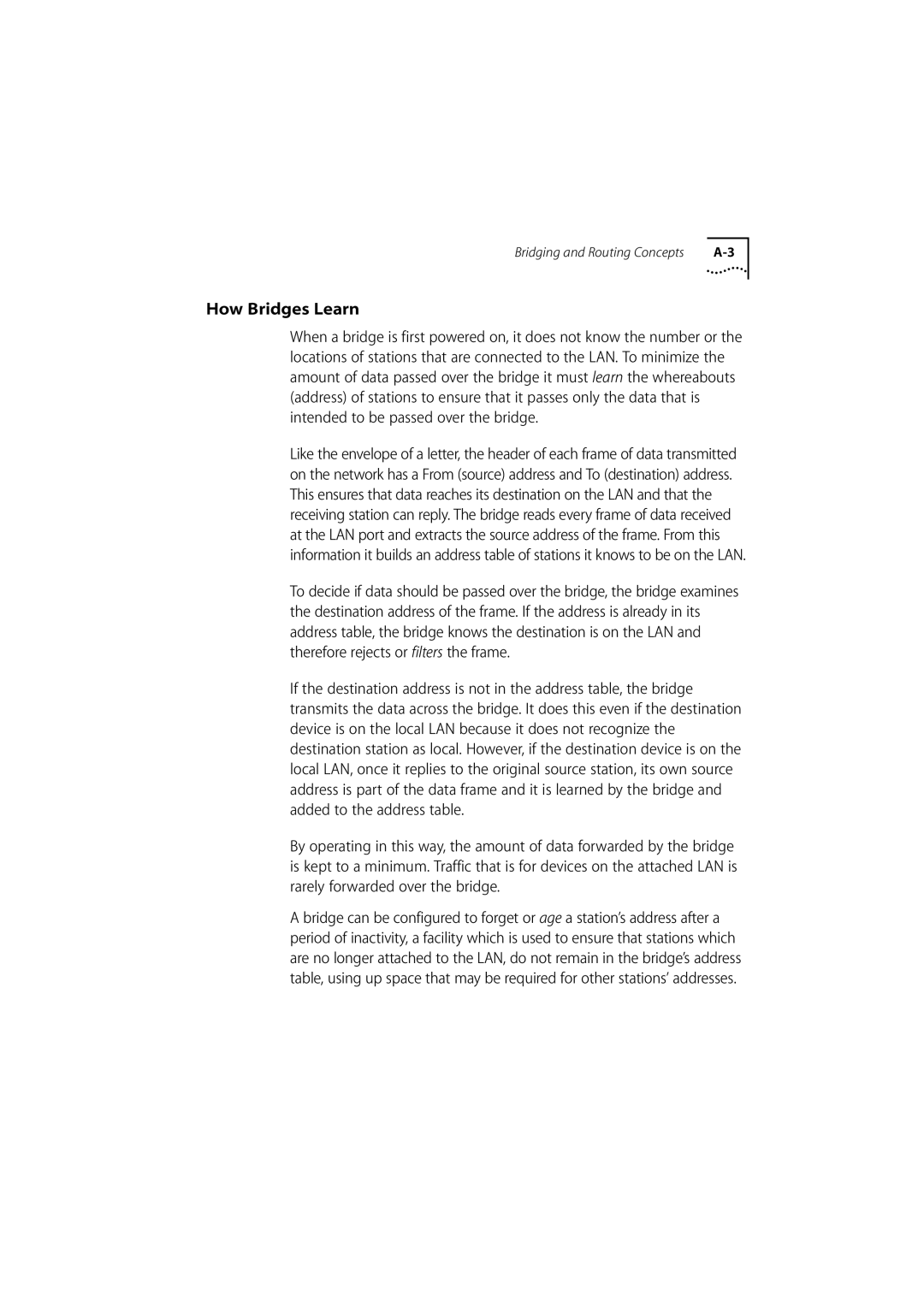Bridging and Routing Concepts |
How Bridges Learn
When a bridge is first powered on, it does not know the number or the locations of stations that are connected to the LAN. To minimize the amount of data passed over the bridge it must learn the whereabouts (address) of stations to ensure that it passes only the data that is intended to be passed over the bridge.
Like the envelope of a letter, the header of each frame of data transmitted on the network has a From (source) address and To (destination) address. This ensures that data reaches its destination on the LAN and that the receiving station can reply. The bridge reads every frame of data received at the LAN port and extracts the source address of the frame. From this information it builds an address table of stations it knows to be on the LAN.
To decide if data should be passed over the bridge, the bridge examines the destination address of the frame. If the address is already in its address table, the bridge knows the destination is on the LAN and therefore rejects or filters the frame.
If the destination address is not in the address table, the bridge transmits the data across the bridge. It does this even if the destination device is on the local LAN because it does not recognize the destination station as local. However, if the destination device is on the local LAN, once it replies to the original source station, its own source address is part of the data frame and it is learned by the bridge and added to the address table.
By operating in this way, the amount of data forwarded by the bridge is kept to a minimum. Traffic that is for devices on the attached LAN is rarely forwarded over the bridge.
A bridge can be configured to forget or age a station’s address after a period of inactivity, a facility which is used to ensure that stations which are no longer attached to the LAN, do not remain in the bridge’s address table, using up space that may be required for other stations’ addresses.
